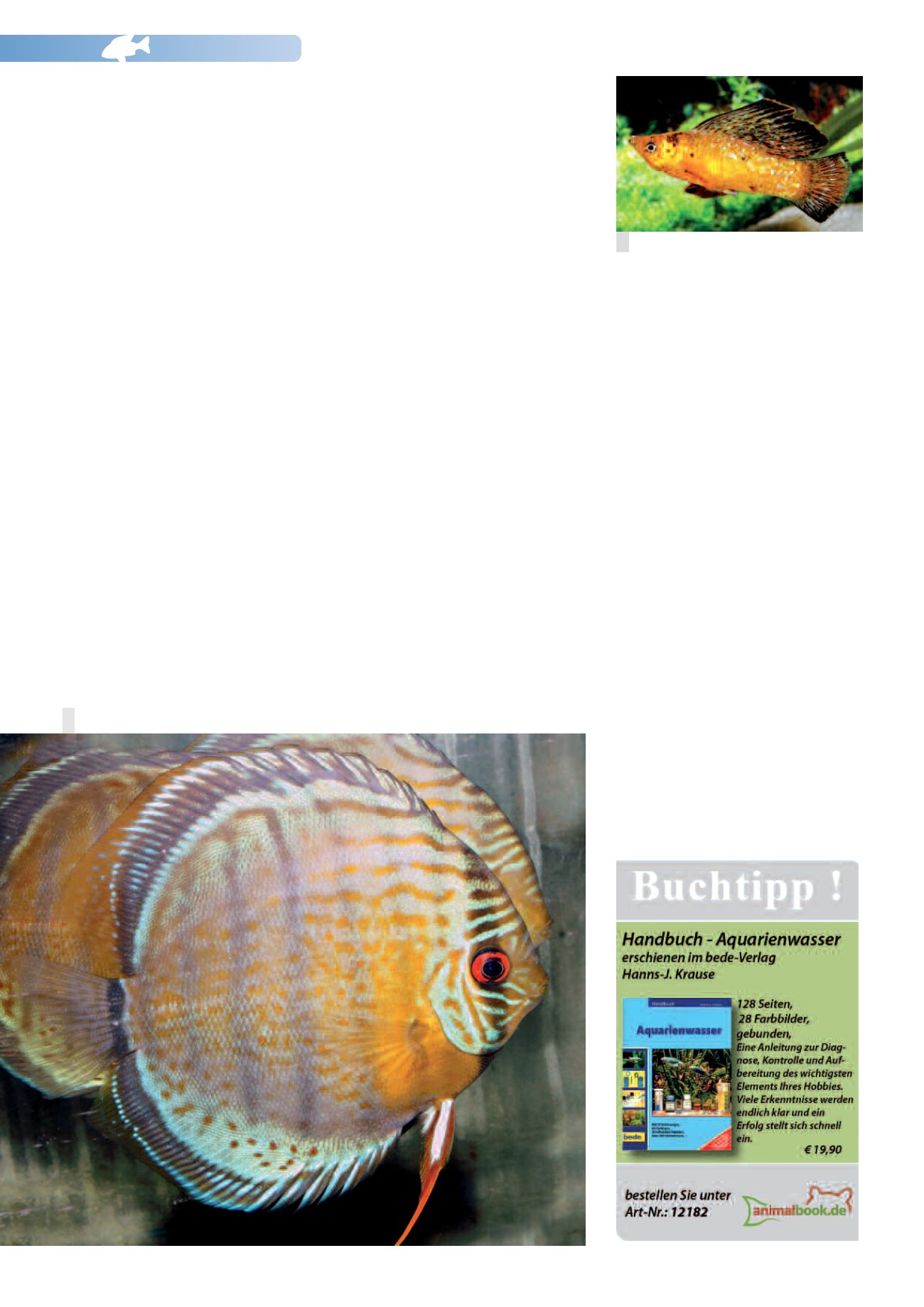
NEWS106
22
Sailfinmollies likehardwater.
Wild-caughtGreenDiscus from theRioNanay inPeru.
News 104 andNews 105).The calciumbi-
carbonate responsible for the carbonate
hardness is inequilibriumwith thecarbonic
acidproduced in theaquarium through the
respiratoryprocesses of fishes,plants,bac-
teria,etc.This is termed the calcium carbo-
nate-carbonicacid-carbondioxidebalance.
It is somewhat difficult to explain as it is
very complex and in additiondepends on
temperature. It cannot beunderstoodwit-
hout a basic knowledge of chemistry . So
for once suffice it to sayhere that itworks.
There is no need to worry about sudden
leaps inpH inwaterwithacarbonatehard-
nessof5-10°dKH.Waterwith thishardness
is also exceptionally well suited for the
maintenanceof fishesofall species,though
theremaybeproblemswith thebreeding
of all softwater fishes in such hardwater.
Why is this thecase?
Soft acidwater required?!
As has already been stated several times,
medium-hardwaterwitha roughlyneutral
to slightly alkaline pH is suitable for the
maintenance evenof fish species that live
in very soft,practically distilledwaterwith
a highly acidpH in thewild. But fishes are
multicellular organisms with complex sy-
stemsoforgans.Bycontrast,eggandsperm
cellsconsistof justasinglecell (unicellular).
And theyareverysensitive to thechemical
influences of their environment. Sperm
cells, for example, have a tail that enables
them to swim.This tail ismade of protein
andworks only at certain (species-depen-
dent) pH values.This explains the someti-
mesmiserable fertilization levelsencounte-
redwhen thebreedingwater for blackwa-
ter fishes has the wrong pH. But the egg
cells are also sensitive topH.After deposi-
tion the fish egg swells tomany times its
original size.This ismainly due toosmotic
processes (and iswhy thewater needs to
be soft for breeding some fishes),but also
to certainproteins known as channel pro-
teins in thecellmembrane that functionas
ionpumpsandareagaindependentonpH.
Softwater canbeproducedathomeusing
a reverse-osmosis unit (othermethod are
verymuchoutof fashionnowadaysas they
are rather time-consuming)or, ifonlysmall
amounts are required, purchased in the
formofdistilledwater.
The acid of choice is always humic acid,
whichcanbe introduced into thewatervia
acidicblackpeat.Thewater is filteredover
this peat until the desired pH is reached.
The packaging for the peat should state
what its pH is. It shouldn’t be significantly
higher than4.
The humic acid in this peat has an excep-
tional bufferingeffect so thepH inpeat-fil-
tered aquaria is usually very stable even if
youareworkingwithpure reverse-osmosis
water. This is why specialist aquarists are
able to keep and breed certain very deli-
cate fishes – such as the licoricegouramis
featured in this issue or some killifishes –
successfully forgenerations in tinyaquaria.
In additionpeat has a hormonal effect on
many fishesandencourageswillingness to
breed.
You can learnmore about peat andother
aids towater conditioning in thenext arti-
cle in this series!


